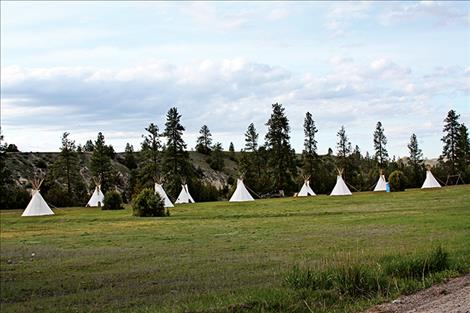CSKT land use planner shares concerns over density map repeal
Hey savvy news reader! Thanks for choosing local.
You are now reading
3 of 3 free articles.
PABLO — The Flathead Indian Reservation’s planning director is concerned about the Lake County commissioners’ plan to make the density map advisory rather than regulatory.
Commissioners have said they plan to repeal the map and make it advisory as part of an updated growth policy.
Janet Camel, a non-Native woman from Wisconsin who is married to a Native man, has worked with the Confederated Salish and Kootenai Tribes as a land-use planner or planning director for 29 years.
“It’s very worrisome to me that we’re going backwards instead of working together cooperatively,” she said last week.
Camel helped write the Flathead Reservation Natural Resource Plan in 1996 and notes the many challenges tribal people have faced through the years and still today. She speaks of the challenge of preserving sensitive land areas and a desire to work with Lake County government to accomplish this.
Although the density map is advisory for the tribes, she notes that there are a lot of jurisdictional issues that have never been ironed out because of the checkerboard nature of land ownership as reflected on a map. “That’s why we try to work with the county,” she said.
Although the tribes rarely allow subdivisions, they follow National Environmental Policy Act (NEPA) regulations when they do, she said.
“We’re trying to come up with a compromise solution to protect special and highly-sensitive areas,” she said.
A video that was produced in 2007, “Finding Common Ground: Guiding Growth on the Flathead Indian Reservation,” highlights concerns about losing precious resources to population growth in the Mission Valley, similar to what has occurred in the Bitterroot and Flathead valleys.
Others may not share those concerns, however. County Commissioner Gale Decker cites demographics that project the county’s population staying the same or declining slightly by 2060.
The tribes abide by land use regulations that don’t allow for development in undeveloped areas, Camel said, noting that land subdivisions are not allowed in the Flathead River corridor or in buffer zones adjacent to tribal wilderness unless they are in an existing clustered site such as Kerr Dam or Dixon.
Although the density map is advisory to the tribes, she notes that it is a starting point used to protect resources. Preserving a density designation that allows only one home on 40 acres is important for preservation, she said, adding that the tribes would also like to preserve agricultural land.
She notes that the tribes sent a draft proposal to the county in recent years that would form the basis for a memorandum of understanding (MOU) between the two governments that states that the tribes comply with the density map.
“We’ve been following it since 2005” when it was adopted, she said.
The tribes are also looking to protect the groundwater in environmentally-sensitive areas such as northeast of Pablo and southeast of Arlee. “More septic systems can impact groundwater,” she said.
These topics and others are likely to come up when the Lake County Planning Board considers chapter 8 of the proposed growth policy — the one that includes the density map — at 7 p.m Feb. 14 in the large conference room on the third floor of the Lake County courthouse.
Commissioners will hold a public hearing about their plan to repeal the density map at 2 p.m. March 13.
















